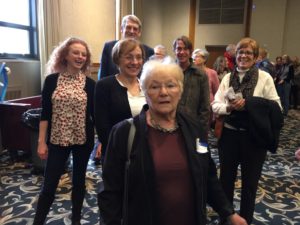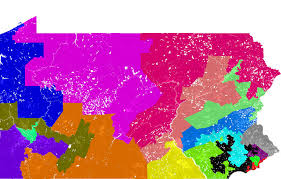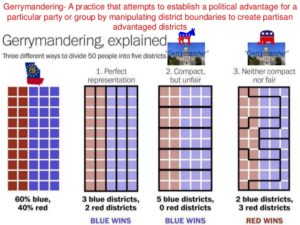 When I wrote the first in this series of “Be Like…” posts, I mentioned all the good friends we have made by dancing with the Pittsburgh Ceili Club. This fourth in my series of posts about people I know who are dedicated volunteers, is the third to feature a Ceili Club member.
When I wrote the first in this series of “Be Like…” posts, I mentioned all the good friends we have made by dancing with the Pittsburgh Ceili Club. This fourth in my series of posts about people I know who are dedicated volunteers, is the third to feature a Ceili Club member.
Our friend Joyce Rothermel is a board member of the Thomas Merton center. The Merton Center began in a store front office on the Southside in 1972 to protest the continuation of the war in Vietnam, and expanded their mission over the years to provide information and resources to combat poverty, racism and war, and advocate simplicity as a lifestyle.
Through the years, the Center has educated and organized against world and local hunger, exploitation of workers, militarism, and racial discrimination in Pittsburgh. Members have been arrested protesting the B-1 bomber, nuclear weapons, and apartheid in South Africa. They have organized fasts and vigils. The first Pittsburgh chapter of Amnesty International and the Greater Pittsburgh Community Food Bank were organized by Thomas Merton Center staff members.
Their many projects include advocating for public transit, promoting sustainable environmental practices, the Book ‘Em Books for Prisoners project, and the Greater Pittsburgh Interfaith Coalition. Their Protect Our Parks campaign fights to keep our state parks fracking-free. They even run a volunteer-staffed thrift store as both a fund-raiser and a clothing charity. And that’s just a partial list. Where peace and justice are the goals, the Merton Center stands ready with partnership and support.
Like Theresa (see my bog post a few weeks ago), Joyce’s activism started with teaching. She was teaching at a Catholic School in the 1970s, and began to feel compelled to put Catholic Social Justice teachings into action. She was on the staff of the Center from 1977-87, and went on to become director of the Greater Pittsburgh Community Food Bank (1987-2011), but has remained an active Merton Center volunteer.
Joyce and her husband Michael are kind and nurturing spirits at the Harp & Fiddle, quick to welcome strangers and to show a compassionate interest in others. Joyce says of her longtime commitment to peace and justice, “It is a privilege to put my faith into action within a communal environment. Working with kindred spirits of all ages, races, religious backgrounds in efforts to make the world more peaceful and just gives meaning and fulfillment to my life.”
Learn more about the Merton Center HERE.

 Dave Hartnett is another of our Pittsburgh Ceili Club friends. One of the first things we learned about him was his passion for human development projects in Guatemala.
Dave Hartnett is another of our Pittsburgh Ceili Club friends. One of the first things we learned about him was his passion for human development projects in Guatemala. Debbie Whitfield is my oldest friend. We’ve known each other since we were little girls attending Sunday School at Trinity Lutheran Church in Sheraden.
Debbie Whitfield is my oldest friend. We’ve known each other since we were little girls attending Sunday School at Trinity Lutheran Church in Sheraden. I’m not as committed a volunteer as my friend Theresa, whom I blogged about last week. My family, my job at the bank and my writing take up most of my time. But I obviously have a passion for the written word, and I try to focus my donations of time and money on the cause of promoting literacy.
I’m not as committed a volunteer as my friend Theresa, whom I blogged about last week. My family, my job at the bank and my writing take up most of my time. But I obviously have a passion for the written word, and I try to focus my donations of time and money on the cause of promoting literacy. I’m always amazed at how small decisions can change your life. When Al and I were planning our trip to Ireland in 2014, we decided to try to learn a little about Irish dancing and music before we went. So, we showed up at the Harp & Fiddle one Tuesday night, thinking to get one Irish dancing lesson…and we liked it so much that we’ve been showing up nearly every Tuesday ever since. We have lots of fun with the dancing (which, I might add, one does NOT learn in one lesson!), but the real gift has been the wonderful friends that we’ve made – including one of the most admirable women I’ve ever had the pleasure of knowing.
I’m always amazed at how small decisions can change your life. When Al and I were planning our trip to Ireland in 2014, we decided to try to learn a little about Irish dancing and music before we went. So, we showed up at the Harp & Fiddle one Tuesday night, thinking to get one Irish dancing lesson…and we liked it so much that we’ve been showing up nearly every Tuesday ever since. We have lots of fun with the dancing (which, I might add, one does NOT learn in one lesson!), but the real gift has been the wonderful friends that we’ve made – including one of the most admirable women I’ve ever had the pleasure of knowing. Think back real hard to 9th-grade Civics. You’ll vaguely remember a term called “gerrymandering.” You probably haven’t thought about it since then. But you should. Because it is one of the reasons for the partisan divide in the United States today.
Think back real hard to 9th-grade Civics. You’ll vaguely remember a term called “gerrymandering.” You probably haven’t thought about it since then. But you should. Because it is one of the reasons for the partisan divide in the United States today.
 In a post a couple of weeks ago, I challenged my readers to just listen to someone they know they don’t agree with politically, and let me know how it goes. I tried this myself, and – somewhat to my surprise – it turned out to be one of the most interesting and enjoyable hours in my week.
In a post a couple of weeks ago, I challenged my readers to just listen to someone they know they don’t agree with politically, and let me know how it goes. I tried this myself, and – somewhat to my surprise – it turned out to be one of the most interesting and enjoyable hours in my week. When we say something is Manichean, or someone has a Manichean view, we mean “black and white,” a very sharp distinction between good and evil, with no gray area. But where does the term Manichean come from?
When we say something is Manichean, or someone has a Manichean view, we mean “black and white,” a very sharp distinction between good and evil, with no gray area. But where does the term Manichean come from? I’m excited about the Mars mission planned for 2030, aren’t you? But, we’re not there yet. For now, we still have only one home. Your assignment for this week is perform at least one action that will reduce pollution, waste or atmospheric CO2, so that this beautiful planet will be livable for our grandchildren and their grandchildren.
I’m excited about the Mars mission planned for 2030, aren’t you? But, we’re not there yet. For now, we still have only one home. Your assignment for this week is perform at least one action that will reduce pollution, waste or atmospheric CO2, so that this beautiful planet will be livable for our grandchildren and their grandchildren.